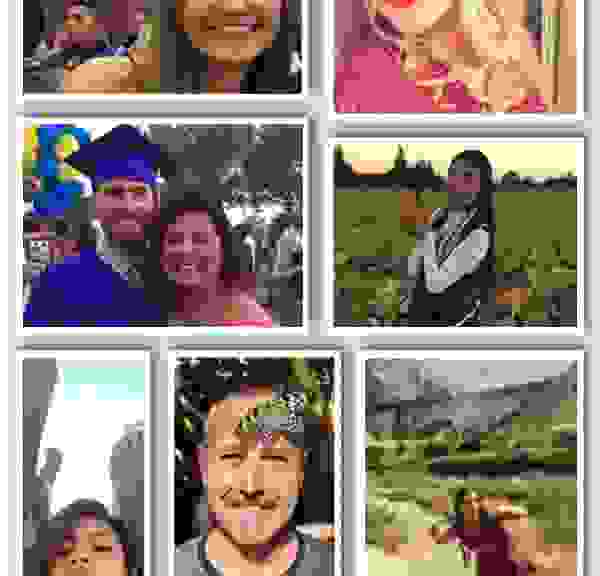
Make 4 Featured Bloggers: Alondra, Chantal, Hailee, Jody, Brittanee, Taylor, & Ariel
 Make Cycle 4 had a variety of books. I enjoyed that throughout all of the books everyone’s makes followed a theme. I loved how the makes I chose specifically all had something to them that was relatable in my personal life. Brown girl Dreaming was a touching and moving free verse that Savannah made a Pinterest board for and who doesn’t love Pinterest? Both Tanpreet Sahota and Morgan Carrico collaborated and made a cake for the book The Crossover by Kwame Alexander. I enjoyed how the entire concept of the book was wrapped up in one delicious basketball cake. I also think it’s pretty cool through reading these books that the both of you were able to collaborate from these books and enjoy your cake as you did so! Sierra was also able to create a video that I enjoyed so much!
Make Cycle 4 had a variety of books. I enjoyed that throughout all of the books everyone’s makes followed a theme. I loved how the makes I chose specifically all had something to them that was relatable in my personal life. Brown girl Dreaming was a touching and moving free verse that Savannah made a Pinterest board for and who doesn’t love Pinterest? Both Tanpreet Sahota and Morgan Carrico collaborated and made a cake for the book The Crossover by Kwame Alexander. I enjoyed how the entire concept of the book was wrapped up in one delicious basketball cake. I also think it’s pretty cool through reading these books that the both of you were able to collaborate from these books and enjoy your cake as you did so! Sierra was also able to create a video that I enjoyed so much!
Brown Girl Dreaming by Jacqueline Woods is a touching and moving free verse memoir of Woods’ life. It was beautiful writing with quotes that tugged at the heart strings. 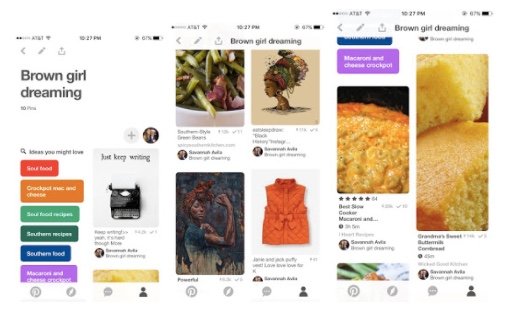 Savannah Avila made this beautiful Pinterest board based off of the author. Savannah decided to make a Pinterest board for Jacqueline Woods as a child – she included things she thought she would wear, quotes and role models she would find empowering, foods she would like to eat, etc. She says, “It was actually really fun to make and made me think hard about her character in the book!” I was lucky enough to have read this free verse memoir as well. I could relate to a lot in this book and the poems were so touching I am glad Savannah was able to recreate a person who is empowering other through her writing. So yeah, I added my book’s name under my picture on purpose. Good job Savannah!
Savannah Avila made this beautiful Pinterest board based off of the author. Savannah decided to make a Pinterest board for Jacqueline Woods as a child – she included things she thought she would wear, quotes and role models she would find empowering, foods she would like to eat, etc. She says, “It was actually really fun to make and made me think hard about her character in the book!” I was lucky enough to have read this free verse memoir as well. I could relate to a lot in this book and the poems were so touching I am glad Savannah was able to recreate a person who is empowering other through her writing. So yeah, I added my book’s name under my picture on purpose. Good job Savannah!
For this make Morgan read the book The Crossover by Kwame Alexander. This free verse novel is more than just about basketball: it’s a book about friendship, family, courage, sportsmanship, academics, fairness and two brothers coming together for the love of the game. Morgan decided to bake a basketball cake that she would bring to Chuck, the boy’s father, celebration of life. The love of the game and the love for their father is what makes the brothers realize that all they have are each other. Tanpreet also agrees and says the cake represents the storyline of all the events that happen just like all the ingredients that make the cake. The book had so much life lessons in the book that can help children learn from them. Just like ingredients you need to make a cake these lessons shaped the main character. Once the cake came together it was like the story came to an end. Good job on your make and awesome collaboration!
Sierra made a video inspired by the story. 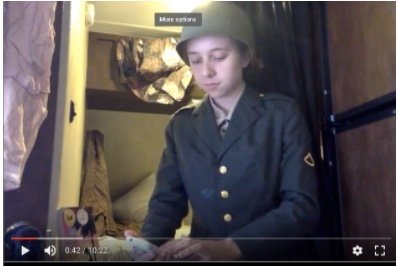 She was able to find connections between this story and the story told in the musical Miss Saigon. She chose two songs to sing and give a brief introduction for both. You did such an amazing job Sierra, good job!
She was able to find connections between this story and the story told in the musical Miss Saigon. She chose two songs to sing and give a brief introduction for both. You did such an amazing job Sierra, good job!
For this week, we read Miller’s Chapter 4 and thought it had some great insightful ideas! The chapter has ideas about how to help keep students motivated, especially during breaks where we notice most children do not pick up books. We need to help encourage our students and find creative ways on how to motivate them on how to stay reading always and learn how to love reading, even if we are on long breaks where there are no teachers. Now it is important to note that sometimes students pick up a book and realize they really don’t like it, which is okay to admit; we as future teachers need to realize that this will occur and to help keep kids motivated help them find a book together that sounds more appealing to them. Not every book is for every student, and that’s okay, we just have to remind our students to keep an open mind when reading, and if still not interested move onto the next. The main goal is to ensure they love reading. We don’t want to destroy that by forcing every student to read a book even if they don’t like it. We want to help find the reader in every student by encouraging them.
Author Bio: Alondra Alviar is 5’7 and stands very awkwardly. She has been in Chico for over four years now and enjoys every day at her beautiful campus. She is a bit shy but she loves people and all living things. She has two younger siblings that look up to her and she doesn’t want to let them down. She is excited to become a teacher in the near future.
 Flashback to the past two weeks…
Flashback to the past two weeks…
We have been working with our amazing book buddies! My book is Butter and to be honest I am reading way ahead. It is just such a good book! I really enjoy talking to my book buddy. She is great and we are both enjoying the book. I have to go back and re-read because we are only supposed to talk about a certain section, but because I am so into the book I have to read again so I won’t spoil it for her. We also made bookmarks for them! I hope they all like them. The book mark I made for my bookmark was cute and I hope she loves it! I saw many amazing ones and I can’t wait to hear from them! 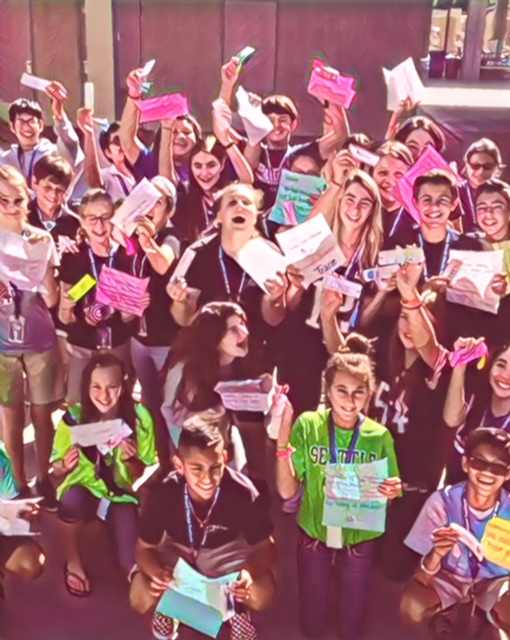
We have been reading our free verse novels and Miller. This is a little summary about Miller and my free verse novel. Chapter 4 of Miller: I really like the idea of planning for readings over break. It keeps the students busy and they get to pick the book that they want. The students seem pretty excited about it. Though personally I don’t think I would be to happy to have to read over break. I also like that they do the reading reflections about the books that they read. There is an example on the chapter that shows a student’s work. He is very honest about the books and it looks like he didn’t really enjoy them. I like how he is being truly honest because when I was in school I felt like I had to lie and say I didn’t like the book because it would probably affect my grade. I have the book Enchanted Air. To be very honest I am not really enjoying this book as much as I enjoyed the other books I have read so far. This book is about a girl whose mom is from Cuba and her dad is from the United States. She compares both Los Angeles and the tropical island. She talks about her dad and her mom and she also talks a bit about her grandma. To me it seems like she likes Cuba more than she likes LA. She also shares stories about herself like the first time she was on the airplane and her time in school.
In the last two weeks, we also had two fantastic presentations on children’s book authors Lauren Castillo and Yuyi Morales. For the author Lauren Castillo, the presenters Hailee, Jorden and Alison read to us the book Nana in the City. The activity they had us do was to draw a cape and inside the cape draw things that make us feel safe. For the author Yuyi Morales, presented by Ben, Jody and Jodi, they read to us the book Niño Wrestles the World. The activity we did for this presentation was to draw a mask.
I really liked the makes for cycle 4! It was hard to pick a few to talk about. Leslie Mendoza- Garcia, your free verse poem left me speechless. It made me tear up because I can relate and I know a lot of us can. You’re not the only one who feels fear; I fear too.
We still experience discrimination despite of what are birth certificate says: “U.S citizen”
They call us “illegals,” “uneducated,” “drunks,” “gang affiliated”
They have buried usIt’s hard to dance when there is weight in my shoulders of all the hatred of my beautiful Mexican roots
It saddens me that we have to live that way. I am protected by DACA but us who are currently protected have no idea of what will happen to us as of now. I have been in the U.S. since I was one, and I know I belong here just like many of us. Thank you for such an amazing free verse poem and expressing the way you feel with us.
The other free verse that I enjoyed was Kimberly Wright’s My Mom and Me. Moms always know best! My mom is also my best friend and I thank her for everything she has kept me from doing like getting snake bites in middle school. She also said, “You’ll thank me later” and I did. Moms are amazing. Your story was very relatable.//www.storyjumper.com/book/index/45180346/My-Mom-and-MeAuthor Bio: Chantal Hernandez-Sierra is a Liberal Studies, Bilingual major. She would really like to teach Kindergarten – 2nd grade. She is from Riverside, CA. She enjoys going to the beach and eating a lot of fruit. She also loves sushi, all day, everyday.
 This Make Cycle we have spent a lot of time working with our book buddies. Our class has partnered up with an eighth grade class at Palm Desert Charter Middle School. We have chosen a few books for each class to read and then we write with the eighth graders about the books. My buddy and I are reading the book Out of My Mind by Sharon Draper. The book is about a girl named Melody who has cerebral palsy and cannot move or talk. Because of her disability, people assume she is not very smart. Not only is Melody extremely intelligent but it seems that she has a photographic memory. She tells her story about her struggle to communicate and to show everyone just how smart she really is. I absolutely loved the book and writing to my book buddy about it was very fun. It was so interesting to see what the eighth graders had to say and the thoughts they had about the books. We even made bookmarks for our buddies with their names on it and a quote from the book. The quote I chose was, “Words have always swirled around me like snowflakes-each one delicate and different.” I loved this quote and it really summed up how the main character Melody felt about words because she was unable to talk.
This Make Cycle we have spent a lot of time working with our book buddies. Our class has partnered up with an eighth grade class at Palm Desert Charter Middle School. We have chosen a few books for each class to read and then we write with the eighth graders about the books. My buddy and I are reading the book Out of My Mind by Sharon Draper. The book is about a girl named Melody who has cerebral palsy and cannot move or talk. Because of her disability, people assume she is not very smart. Not only is Melody extremely intelligent but it seems that she has a photographic memory. She tells her story about her struggle to communicate and to show everyone just how smart she really is. I absolutely loved the book and writing to my book buddy about it was very fun. It was so interesting to see what the eighth graders had to say and the thoughts they had about the books. We even made bookmarks for our buddies with their names on it and a quote from the book. The quote I chose was, “Words have always swirled around me like snowflakes-each one delicate and different.” I loved this quote and it really summed up how the main character Melody felt about words because she was unable to talk.
Besides Out of My Mind, I have been reading the book Brown Girl Dreaming by Jacqueline Woodson. This is one of the free-verse novels that our class is reading. Since it is written in free verse, it is very different than things that I usually read and I will admit that it took me a little bit to get used to it. The author, Jacqueline Woodson, is an African-American woman who was born in the 60’s during the Civil Rights Movement. The book is about her life and growing up in the South where, even after the Civil Right’s Movement, racism is still very much alive. One of the quotes I liked from the book was, “We all have the same dream, my grandmother says. To live equal in a country that’s supposed to be the land of the free.”
In previous Make Cycles, a lot of the makes people did were drawings. This Make Cycle we wanted to try and stray away from that and do something different. I was really impressed by the makes and a couple really stood out to me. One of the makes I liked was Abby’s make. She read the book Inside Out and Back Again. The book is about a family who has to flee their home in Vietnam. Abby packed a suitcase of the things that she would bring with her if she had to flee home. She even put her dog in the suitcase which I thought was very cute. 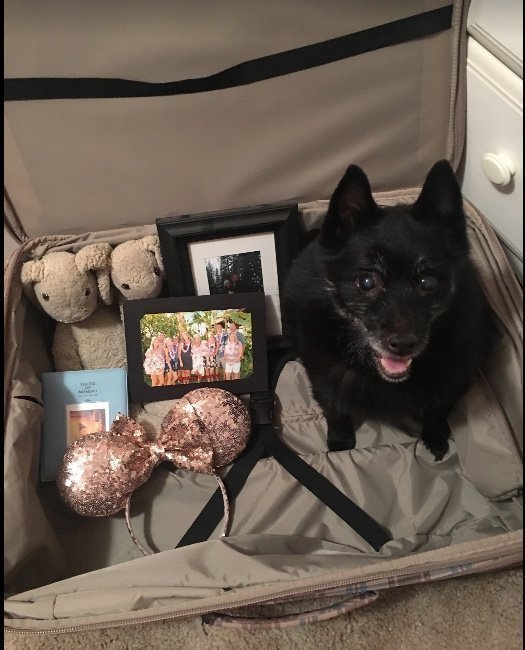
Another make that really stood out to me was Sierra’s. She also read the book Inside Out and Back Again. Sierra said she made a connection between the book and the musical Miss Saigon. She made a video of herself singing a couple of the songs from the musical. Sierra has an amazing voice and was very animated. She even dressed the part and you could really feel the emotions when she was singing. I really enjoyed her make and everyone else’s. It was nice being able to enjoy everyone’s make without having to worry about making my own, especially since this Make Cycle everyone was so creative!
Author Bio: Hailee Van Housen is a senior at Chico State. A few things that make her happy are puppies, tea, music, and the holidays. She loves school and is so excited to have her own classroom in the future.
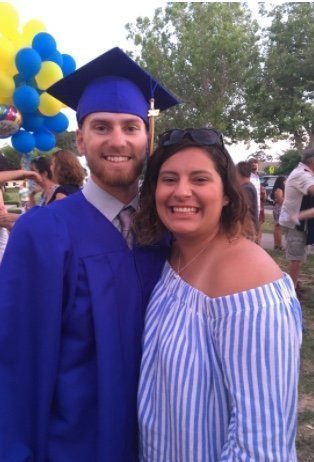 Over the last couple of weeks, we have had great conversation with our book buddies as well as finishing our free verse books. I’ll first talk about my fantastic book buddy. My book buddy Natalie is amazing. She has been on top of all of her posts. She will pull multiple quotes from the book and give her opinion on them. Then asks me my opinion. She also poses questions that makes me think about something in the book that I had not thought of. An example of Natalie keeping me thinking is “Or another thought that crossed my mind is that what if the letters are written by Danny but in the future?” Natalie would ask questions like this throughout our time as book buddies. She asks questions about the book that makes you change your thought about something in the book. She kept her mind open when it came to thinking of what the author was trying to portray in the story. I have loved having her as a book buddy. The way Natalie breaks down the book and thinks about makes me very excited. She has so many thoughts of why the author used a certain word to describe something. It’s very interesting to see how and why she was thinking about something that happened in the book.
Over the last couple of weeks, we have had great conversation with our book buddies as well as finishing our free verse books. I’ll first talk about my fantastic book buddy. My book buddy Natalie is amazing. She has been on top of all of her posts. She will pull multiple quotes from the book and give her opinion on them. Then asks me my opinion. She also poses questions that makes me think about something in the book that I had not thought of. An example of Natalie keeping me thinking is “Or another thought that crossed my mind is that what if the letters are written by Danny but in the future?” Natalie would ask questions like this throughout our time as book buddies. She asks questions about the book that makes you change your thought about something in the book. She kept her mind open when it came to thinking of what the author was trying to portray in the story. I have loved having her as a book buddy. The way Natalie breaks down the book and thinks about makes me very excited. She has so many thoughts of why the author used a certain word to describe something. It’s very interesting to see how and why she was thinking about something that happened in the book.
This week as a class we finished our free verse book. The book I chose to read this time around was Inside Out and Back Again by Thanhha Lai. This is a story about a little girl Ha and her family fleeing Vietnam during the war with the United States. When reading with story I had a mix of different emotions going through my head. It was a very inspiring book. I think I got hooked by this book because of the stories in this book were real and told by someone who had to actually go through the events. I don’t really like free verse books or poetry in general. When I think of poetry I thinking of rhyming words or lyrics by Shakespeare. But this book may have just changed my thinking about poetry.
Some other free verse books that were read by my fellow classmates were The Crossover by Kwame Alexander and Brown Girl Dreaming by Jacqueline Woodson. This week no one was allowed to draw a picture for their make, so everyone came up with great unique examples that portrayed their make. But a couple of Makes for the book The Crossover were Morgan and Tanpreet’s cake. 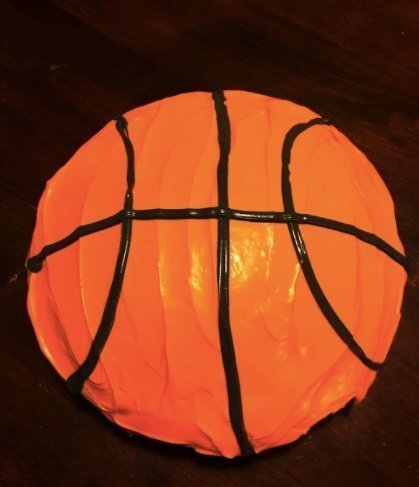 Their make stuck out to me because I love cake. I think cake is one of the greatest creations ever made. Thank you Greeks for cake!
Their make stuck out to me because I love cake. I think cake is one of the greatest creations ever made. Thank you Greeks for cake!
One other make from the book The Crossover that caught my eye was the free verse by Jodi Steigerwald. She wrote her own free verse but uses the same layout that can be found in the book. I thought this was a great idea because this gives a sense of what reading the book was like without actually reading the book.
Rhy•thm
[ri-t-hem]
movement, fluctuation, or variation marked by
the regular recurrence or natural flow of
related elements;
the repetition in a literary work of phraseAs in: Jazz music has a
Unique kind of Rhythm to it unlike
pop music which has the same
Beat and RhythmAs in: My Mom has absolutely
No Rhythm but my
Dad can sway like a palm tree
In the wind to the beat of a songAs in: Every poem has it’s own
Rhythm but The Crossover
Has a hip hop groovin’
Type of Rhythm
Brown Girl Dreaming had some amazing makes as well. One that I thought was great and I could use in my classroom was Katie Larson’s. I love the idea of reading this book and having my students pick a moment in their life and show the connections that happens with that one single moment. This would allow my students to express themselves as well as seeing how one choice they made had so many different connections with it. Since I am a blogger this week I didn’t create a make for my own book, but Abby Teer created a make for the book we read. She took a picture of the things should put in a suit case and take with her if she had to flee. I thought that this did a great job making you think about how Ha and her family were feeling. How could you put everything important to you in just one bag? You have spent your life in one place now you are fleeing it and leaving things behind. How do you choice what to leave or take?
This last week also read chapter four, “Wild Readers Have Reading Plans,” in the book Reading in The Wild by Donalyn Miller. This chapter was about reading plans. One quote that stuck out to me from this chapter was “Students who read on an inconsistent basis never develop an attachment for reading.” This tells me as a future teacher that I need to make sure I have my students not only reading in my class but as home as well. In the same section it continues to talk about how we need to make sure students are finding time in their schedules to read. So, in my future classroom, I think I’ll have some sort of time at the begin on the week to have my students plan out the times they think they will have to read. The chapter talks about different types of reading plans. It has short term and long term commitment plans. This chapter also offers challenges for readers. I think that I am going to start The Newbery Challenge. I have set some parameters for this challenge. I want to start in the year 2000 and read every book on this list until present day. I have looked over the books so far I have read about 10 of them, so I know I have a starting point for this challenge.
Author Bio: Brittanee Garcia, who has two brothers, is pictured above with her little brother Tim. If she is not at school or with her family, you can find her in the pool teaching swim lessons at WaterSprites. She has been there for a little over two years. If she’s not at work, she will most likely be at the dog park with her fur baby, Buster.
 The book that I chose to read for my free verse novel was Inside Out & Back Again by Thanhha Lai. I have never read a book written as a series of short poems. I found it a little awkward at first, but after reading several pages, I started to get used to the flow. It has so much detail and emotions that it feels like I’m reading the little girl Ha’s personal diary. The novel is about a 10-year old little girl named Ha who has lived in Saigon, Vietnam, until Ha and her family are forced to leave their home in Saigon because of The Vietnam War. The name Ha means Golden River referring to where her mother and father used to walk together. Ha lost her father, so just her mother, two brothers and she decided leaving their home was the best decision before one of them loses their life. The author does a great job explaining Ha’s point of view and experiences with great detail. I found this book interesting, but I’m not sure if I would recommend it to a friend because it was a sad novel and I don’t care for the war. Ha thinks that she left all her troubles and hardships behind in Saigon, but their struggles have just begun as they board a Navy ship headed to the United States. Ha, and her family’s luck and faith start to improve at the end of the book.
The book that I chose to read for my free verse novel was Inside Out & Back Again by Thanhha Lai. I have never read a book written as a series of short poems. I found it a little awkward at first, but after reading several pages, I started to get used to the flow. It has so much detail and emotions that it feels like I’m reading the little girl Ha’s personal diary. The novel is about a 10-year old little girl named Ha who has lived in Saigon, Vietnam, until Ha and her family are forced to leave their home in Saigon because of The Vietnam War. The name Ha means Golden River referring to where her mother and father used to walk together. Ha lost her father, so just her mother, two brothers and she decided leaving their home was the best decision before one of them loses their life. The author does a great job explaining Ha’s point of view and experiences with great detail. I found this book interesting, but I’m not sure if I would recommend it to a friend because it was a sad novel and I don’t care for the war. Ha thinks that she left all her troubles and hardships behind in Saigon, but their struggles have just begun as they board a Navy ship headed to the United States. Ha, and her family’s luck and faith start to improve at the end of the book.
In reading chapter four of Reading in the Wild by Donalyn Miller, she emphasizes how crucial it is to create and maintain your own reading list along with short-term and long-term personal goals to become future wild readers. Miller expresses that having a reading list builds anticipation for another great reading experience and drives their enthusiasm and desire to continue reading. She also argues that “Students need to make their own choices about reading material and writing topics,” which would have made a huge difference in my attitude towards reading growing up. I really like Miller’s idea about students setting their own reading goals to accomplish over holidays or summer vacations. After they return from their break, they can reflect back on their reading goals and what they accomplished during their break. I also agree with Miller’s views that constructive criticism is helpful, but too much could do more damage than good. I feel that teachers should be developing some ideas to teach the students how to respond to sometimes hurtful constructive criticism. I think students need to have a better understanding of constructive criticism, so it doesn’t sound so negative or possibly offending them when receiving their feedback. I feel Miller does a great job emphasizing that empowering your students will help them feel more confident so that they can push themselves beyond their comfort level. Miller discusses that while reading behavior and exploring in different chapters helps readers build lifelong reading skills and habits, but making short term and long term reading plans will help them expand their reading lives and knowledge. I like Miller’s quote that said, “knowing what book to read next would keep me reading, I’m excited every time I do read and especially finish a book of my own choice, it feels good but if I don’t have another one to start or the next one I start isn’t good, then I usually take a long break from reading.” I guess with that thought to become a wild reader you need always to have the book you are currently reading along with several other books you’re going to read in the future with an active list of interesting books that you’re looking forward to reading. She expresses that setting personal goals for the students to read a specific number pages or even a certain number of books in a certain amount of time will keep the readers driven and engaging in the material that they’re reading or looking forward to reading in the future. As a future teacher, I plan on helping my students to develop and sustain an active reading list.
We finished up our free verse novels this week, ending cycle four with these next level “Makes.” Everybody was asked to take their cycle four Makes to the next level with no drawings because drawings dominated our last cycle. I was reviewing and admiring all the new Makes when Sierra Dallugge’s Make caught my eye with her creative soldier costume. We both read Inside Out & Back Again. Sierra created a musical video inspired by the free verse novel: her video was called “Miss Saigon.” Sierra has a great singing voice and acting skills. Sierra did an excellent job with her costume and introduction to her songs. I really enjoyed watching her musical; it reminded me of a Disneyland musical (see link above).
The next Make that caught my eye was Kimberly Wright’s free verse story book called “My Mom and Me.” I found her story touching with a great lesson about parenting and trying to keep the one you love safe. Most children don’t realize how fortunate they are to have caring parents that love them enough to say, No. The link to Kimberly’s story “My Mom and Me” (see above).
It was a tough decision but the last Make that grabbed my attention was Alison Zuris colorful Make for the novel Inside Out & Back Again. Alison created a beautiful collage of emotional narratives told through Há’s eyes and heart. The collage includes five memorable parts of Saigon that impacted Há’s journey. 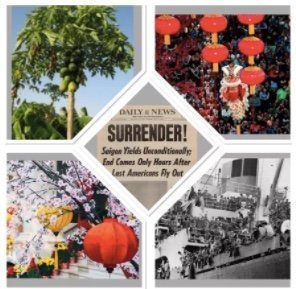 Alison describes at the beginning of the book they celebrate Tét, which is at the top right and bottom left of the collage. Alison expresses throughout the story Há’s papaya tree is significant to her and a part of the home she dearly misses, located at the top left. In the center of the collage is a newspaper announcing the Vietnamese surrendering and catalyst for Há’s narratives of the fall of Saigon. And at the bottom right of collage is a picture of a boat full of people fleeing Vietnam just like Há and her family did at the beginning of the book. I agree with Alison that these images were essential parts of the story and show the different colors of Há’s life. All of these vibrant pictures show memorable parts of Ha’s life of joy and numbing conflicts she faced as a young girl.
Alison describes at the beginning of the book they celebrate Tét, which is at the top right and bottom left of the collage. Alison expresses throughout the story Há’s papaya tree is significant to her and a part of the home she dearly misses, located at the top left. In the center of the collage is a newspaper announcing the Vietnamese surrendering and catalyst for Há’s narratives of the fall of Saigon. And at the bottom right of collage is a picture of a boat full of people fleeing Vietnam just like Há and her family did at the beginning of the book. I agree with Alison that these images were essential parts of the story and show the different colors of Há’s life. All of these vibrant pictures show memorable parts of Ha’s life of joy and numbing conflicts she faced as a young girl.
Author Bio: Jody grew up and currently lives in Sutter, which is a little town at the base of the Sutter Buttes. He is a Liberal Studies major, minoring in special education at Chico State. He decided to go to Chico because they have one of the best Liberal Studies programs in the area and the campus is close enough to commute to every day. He enjoys spending time with his family, animals and going to Disneyland. His hobbies include hiking, camping, and traveling. He decided to be a teacher because he believe that education is the key to success in life and teachers make a lasting impact in the lives of students. He is looking forward to becoming a special ed teacher and his primary goal is to become a principal of a school in the future.
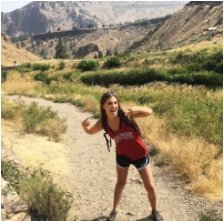 These last two weeks have been full of different assignments that were mainly lots of reading for our free-verse novel and our book with our eighth grade buddy. I loved reading the book Butter because it was funny, happy, and sad. It really made you think about suicide and to be there for each other. For my free-verse novel, I read Inside and Out and Back Again. This novel is about a young girl named Ha from Vietnam where she is faced with having to flee Saigon because of the Vietnam War. Throughout the book, it discusses how Ha and her family are trying to find a safe place to live far from the war. It was hard for me to read at first because I’m not crazy about poetry and I would rather just not read it. Towards the end of the book, I ended up loving it. This novel had such a good message and I found myself not putting it down.
These last two weeks have been full of different assignments that were mainly lots of reading for our free-verse novel and our book with our eighth grade buddy. I loved reading the book Butter because it was funny, happy, and sad. It really made you think about suicide and to be there for each other. For my free-verse novel, I read Inside and Out and Back Again. This novel is about a young girl named Ha from Vietnam where she is faced with having to flee Saigon because of the Vietnam War. Throughout the book, it discusses how Ha and her family are trying to find a safe place to live far from the war. It was hard for me to read at first because I’m not crazy about poetry and I would rather just not read it. Towards the end of the book, I ended up loving it. This novel had such a good message and I found myself not putting it down.
After wrapping up the rest of last week with Make Cycle 4, I loved seeing everyone’s makes. I noticed there were lesson plans, videos poems, and even a cake that was made. For the novel The Crossover some people thought that writing a poem was the best activity to do. One poem that really stood out to me was by Jamie Ledesma. 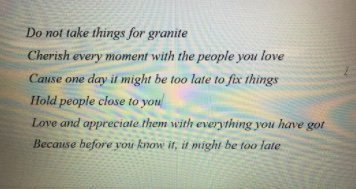 I absolutely loved this because it’s true and people should live by it. In the book, the two brothers were in a fight, and the brother Jordan would not accept his brother Josh’s apology. Later on, the dad passed away and Jordan realized that he needed his brother more than anything. No one should have to live with regret and should just apologize because anything can happen at any time. Even though this book sounds sad, I would love to read it.
I absolutely loved this because it’s true and people should live by it. In the book, the two brothers were in a fight, and the brother Jordan would not accept his brother Josh’s apology. Later on, the dad passed away and Jordan realized that he needed his brother more than anything. No one should have to live with regret and should just apologize because anything can happen at any time. Even though this book sounds sad, I would love to read it.
The book Brown Girl Dreaming, by Jacqueline Woodson, was about the author and she discusses how she grew up in the 1960s and 1970s while living in the South. She talked about her family and her birth, while also exploring other moments in her life. Katie Larson had a fun lesson plan that stood out to me that sounded fun for a class to do.
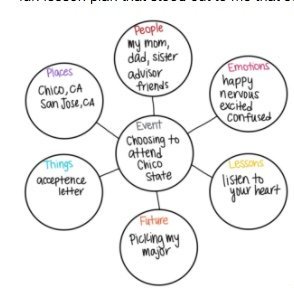
As a teacher, she would love to have her students think of important key moments in their lives while thinking about Jacqueline’s life and the moments in hers. Thinking about the emotions they felt and how it affected who they are today. It can get students thinking of the future and how to connect with others. This activity would even make me think of the events that shaped me into who I am today.
Also this last week, we read Chapter 4 of Reading in the Wild. One takeaway from Miller that I thought about for awhile was actually in the beginning where the author asks what our future plans will be for reading. I never was one who loved to read, but now going into teaching, I understand that I’m going to be doing it a lot and need to start reading more. A goal I have before I become a teacher is collecting as many children’s books as I can: whether it be from yard sales, used bookstores or even family members. As a teacher, an activity I would want to do with my students is to encourage them to try to read over their breaks. An example I liked was included in “Community Conversations.” She would have her students discuss what books they will read over break and having the students swap books with one another. I just love that idea! Another big take away was making “Commitment Plans” (143). This is a good way for students to challenge themselves on their reading. An idea I thought of doing with my future classroom, was having the students challenge themselves each week on how many more pages they can read in their book or how many more books they can read in the next week.
I just want to encourage my students to love reading!
Author Bio: Taylor Holmes has lived in Chico for 21 years, graduated from Pleasant Valley High School and transferred from Butte College to Chico State this last spring. She decided to pursue a career in becoming a teacher because she loves kids and has lots of cousins and family friends who are teachers. She also had the best teachers as role models and she could only hope that she could be the same for her students someday. She loves the outdoors and exploring new places when she’s not at school.
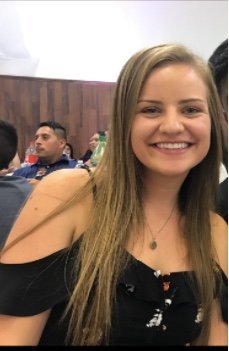 The past two weeks in class have been full of lots of reading and learning. We have been reading and conversing with our 8th grade book buddies from Palm Desert and I have really been enjoying it. My book buddy is so sweet and he asks great, intellectual questions. Plus, I have really enjoyed the book that we have been reading and it is totally not something that I would have picked outside of school to read, but I am really glad that I have gotten the chance to read it. We have also spent time reading our free verse books, which has been fun, too. I liked the storyline of the free verse book that I read, but I didn’t like the way that the free verse books were written. It was really hard for me to stay focused and I couldn’t follow the story. I loved all of the advice that Miller had offered in chapter 4 of her book with the challenges because goals and challenges motivate students to do better and push themselves. After reading each chapter in Miller’s book, I find myself more and more excited to become a teacher and to help my students become wild readers.
The past two weeks in class have been full of lots of reading and learning. We have been reading and conversing with our 8th grade book buddies from Palm Desert and I have really been enjoying it. My book buddy is so sweet and he asks great, intellectual questions. Plus, I have really enjoyed the book that we have been reading and it is totally not something that I would have picked outside of school to read, but I am really glad that I have gotten the chance to read it. We have also spent time reading our free verse books, which has been fun, too. I liked the storyline of the free verse book that I read, but I didn’t like the way that the free verse books were written. It was really hard for me to stay focused and I couldn’t follow the story. I loved all of the advice that Miller had offered in chapter 4 of her book with the challenges because goals and challenges motivate students to do better and push themselves. After reading each chapter in Miller’s book, I find myself more and more excited to become a teacher and to help my students become wild readers.
Miller’s chapter 4 was about encouraging students to create reading goals for themselves, especially over summer, Thanksgiving, and holiday breaks so that they don’t lose their momentum. Even though sometimes these goals aren’t always accomplished and that is okay, it is important to have students set reading goals so that they are motivated to continue reading even without the structure of a classroom. I really like that she was very open with her students about her not completing personal book challenges herself, it reassures the students that it is okay for them to put a book down in the middle of it, or to not finish a challenge you had set for yourself. I really liked her idea of the summer challenge to read an average of one book per day. I think it is a great way to keep students going with the reading and they don’t always have to be difficult books so it isn’t always time consuming. She does a really great job at motivating her students to be wild readers.
The free verse book that I read was Inside Out and Back Again by Thanhha Lai. The main character, Ha, has lived in Saigon, Vietnam her entire life. She has lost her father, but still has brothers and her mother. The Vietnam war has come to their town and they have basically no other choice but to leave because they are scared to stay and risk their lives. They have finally boarded a Navy ship in route to the United States. So far, the boat ride has been a struggle and very hard for everyone.
All of the makes for this week’s free verse book were so great and creative. After Kim encouraged us to stay away from drawing this week because of the amount of drawing makes last time, everyone really stepped it up and came up with some very creative ideas. When I had created makes the last two times, I had a really challenging time coming up with ideas and am always so impressed with what they come up with.
There were a few in particular that I really liked. The first one was Abby Teer’s; she read the book Inside Out and Back Again and her make was a picture of her bag that she would bring if she had to flee the country, just like Ha had to do in the story. Another make that I really enjoyed was Savannah Avalia’s. She read Brown Girl Dreaming and chose to create a Pinterest board for the main character, Jacqueline Woods. In the Pinterest board she found quotes, food, etc., as to what she thought Jacqueline would have enjoyed when she was younger. Both of these ideas were really creative and very different. They both did a really great job at analyzing the book and the characters from the book.
Author Bio: Ariel is a senior Liberal Studies major who is graduating in the spring. She hopes to begin the multiple subject teaching credential program at Humboldt State in fall of 2018. She plans on becoming an elementary school teacher and hopes to teach lower grades, somewhere from 1st-3rd grades, but isn’t too picky. Ariel has a real passion for teaching and can’t wait to begin her career!

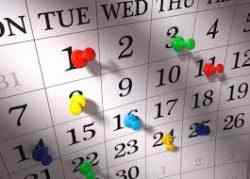
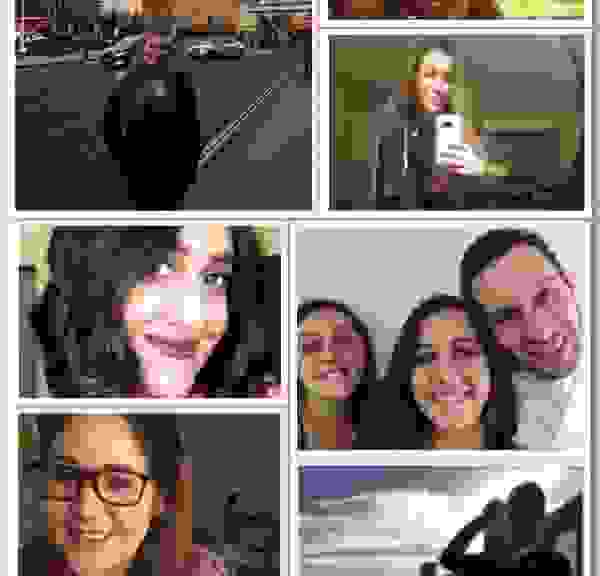
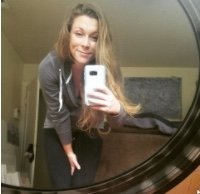
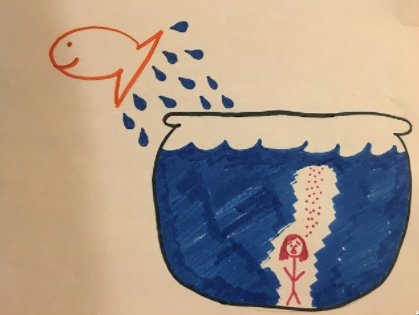
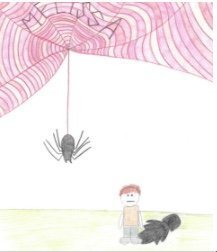
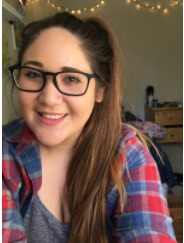
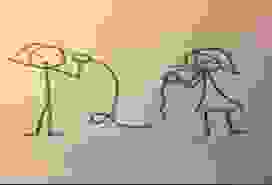
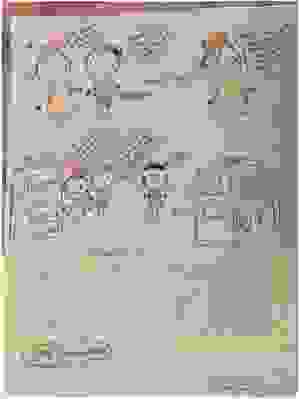

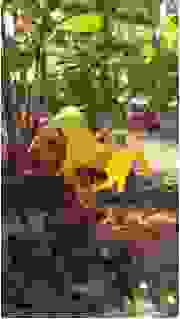
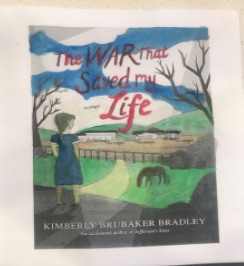

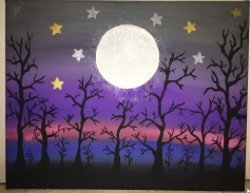

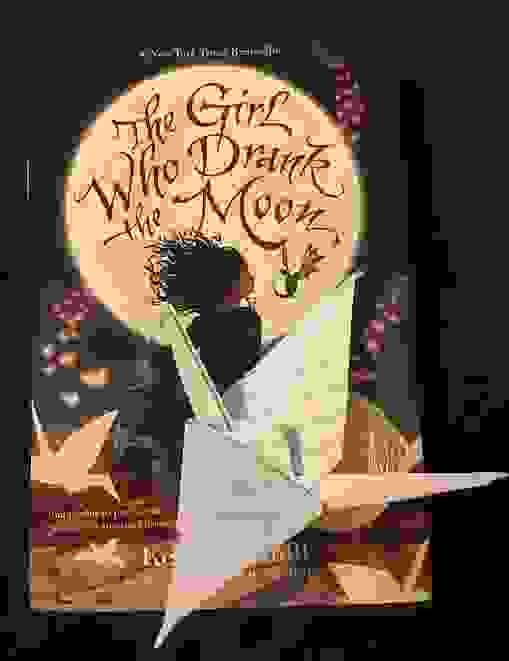

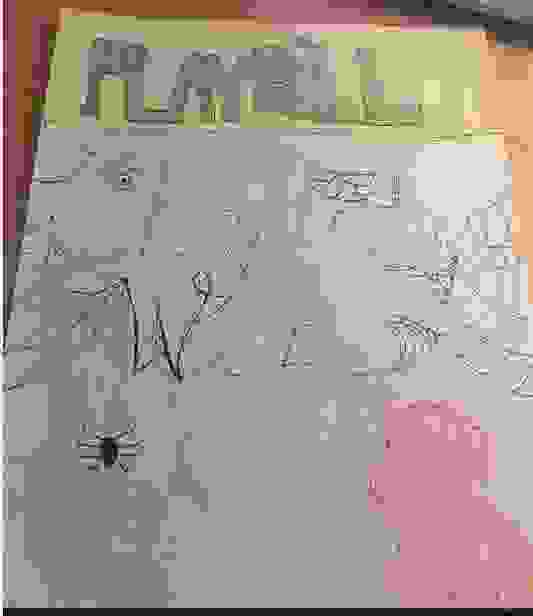
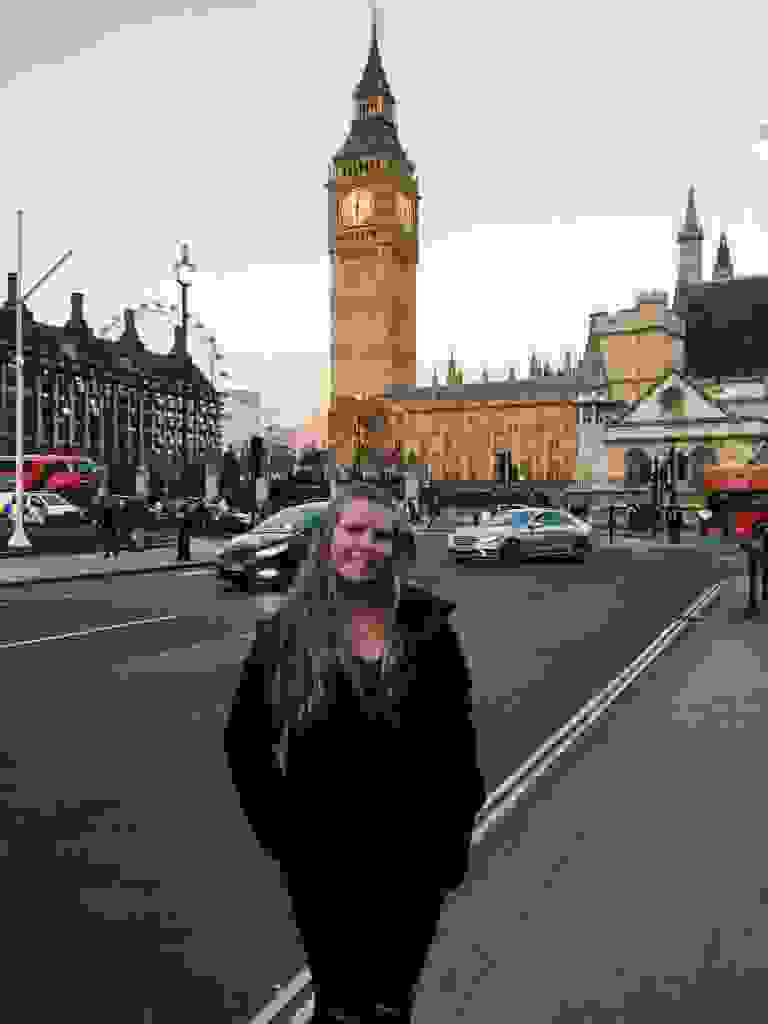
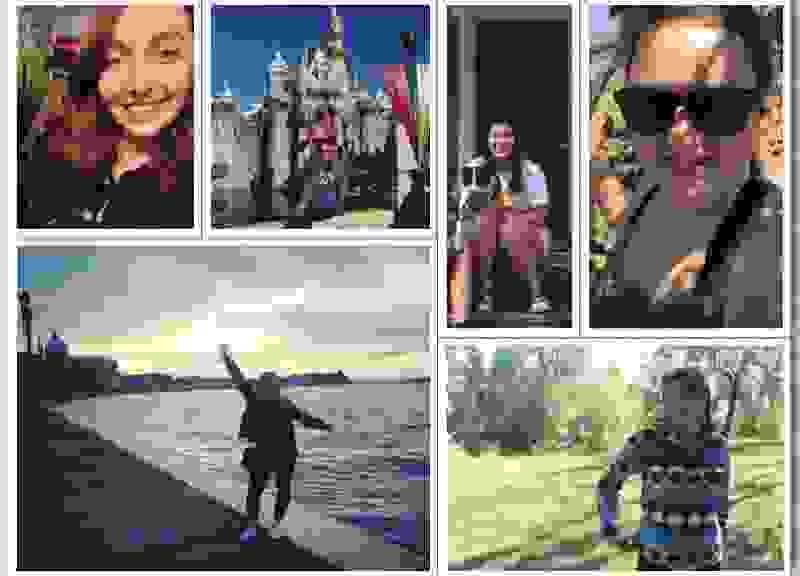



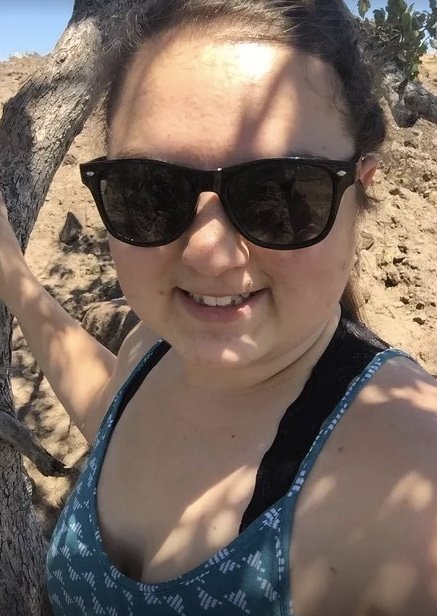
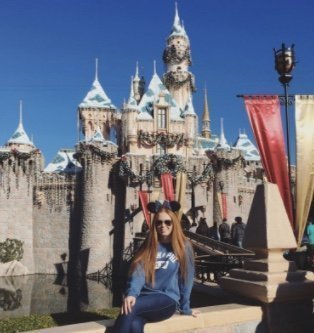
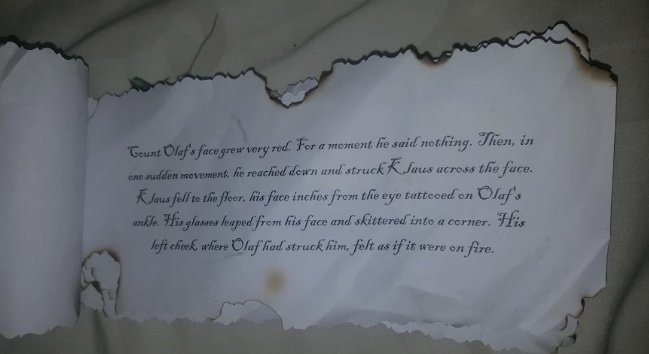
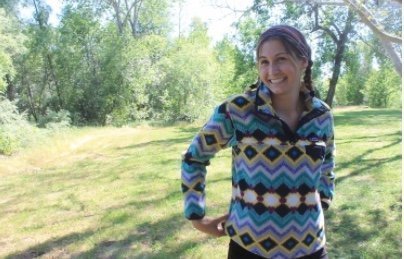
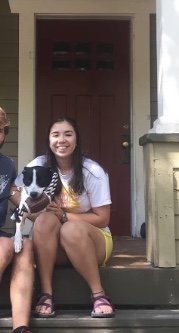
 This make was simple but so clever. I think this would be a great activity for a class to do while reading the book. I also really liked what he had to say about what origami yoda represents and that’s a level of consciousness. Something we all have inside us but often forget about, explains Benjamin. I think that would be a really important and valuable lesson to kids.
This make was simple but so clever. I think this would be a great activity for a class to do while reading the book. I also really liked what he had to say about what origami yoda represents and that’s a level of consciousness. Something we all have inside us but often forget about, explains Benjamin. I think that would be a really important and valuable lesson to kids.